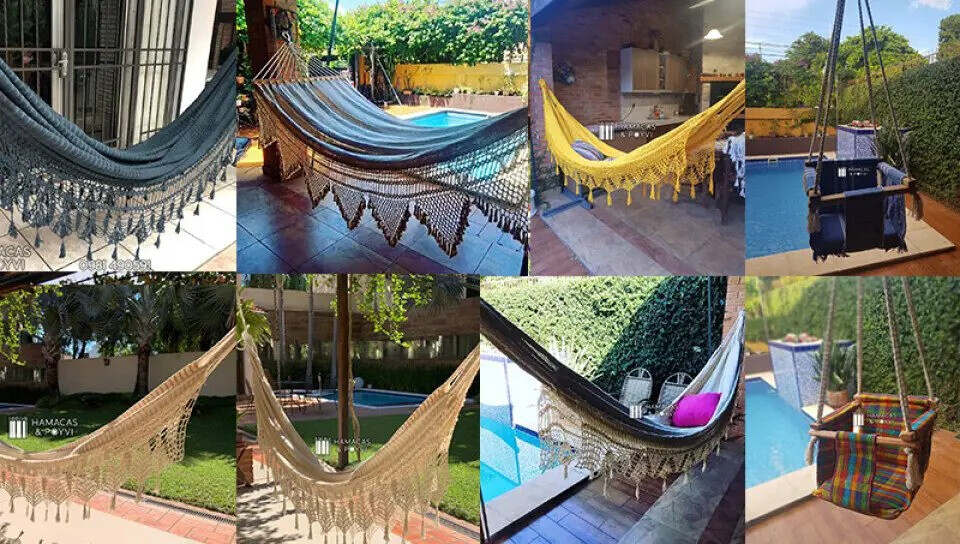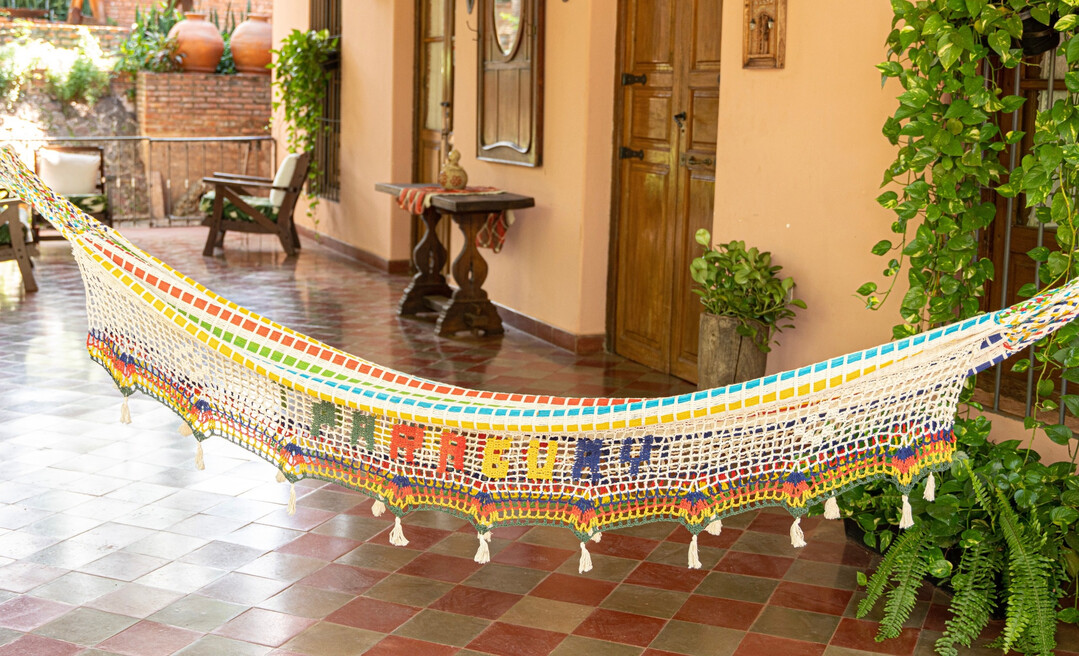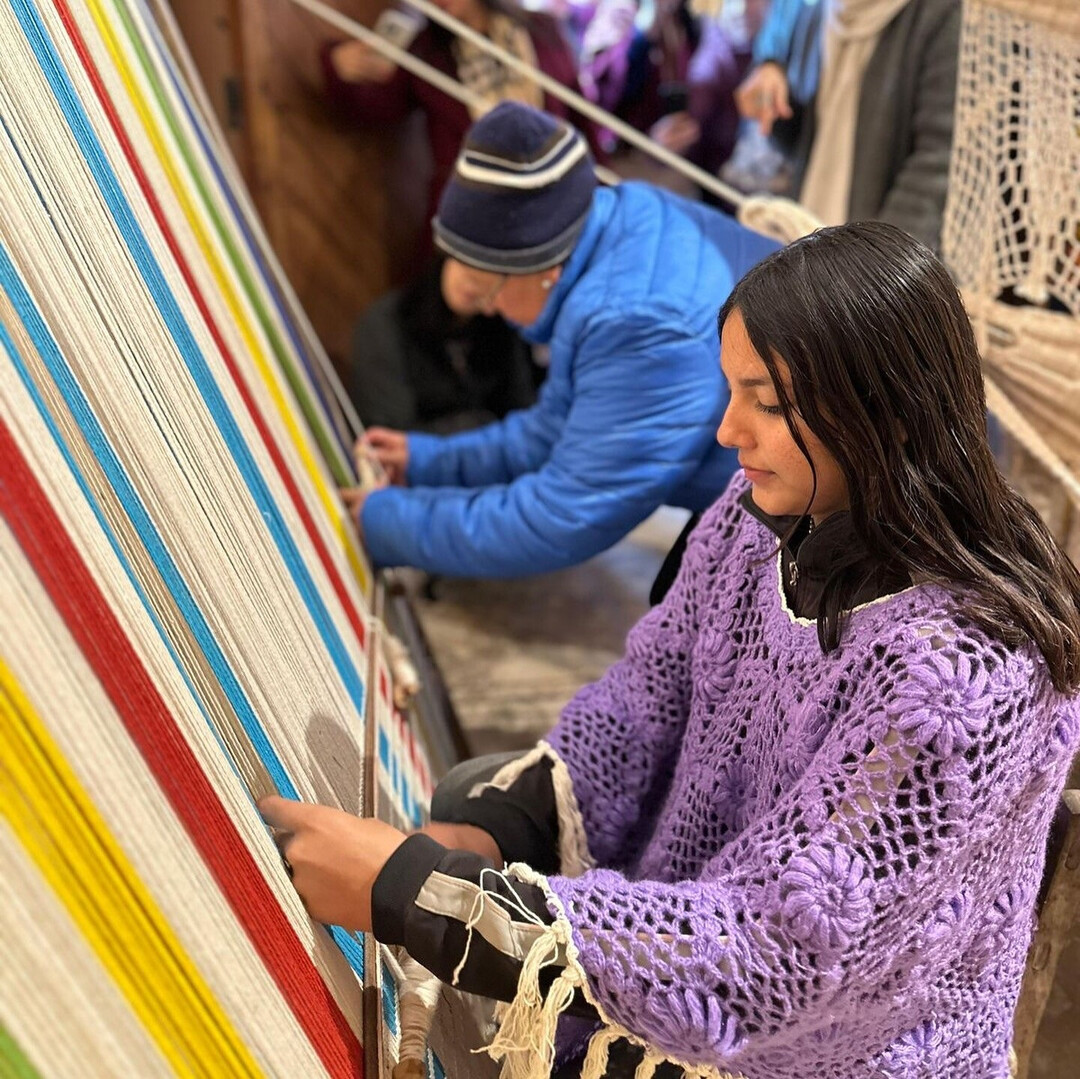
The first-ever fair celebrating the 'Hamaca Pirayú,' also known as the 'Paraguayan Hammock,' one of the most emblematic expressions of Paraguayan traditional craftsmanship, will be grandly held on Saturday, June 14th, starting at 10 AM, in the Yaguarón Yurú district of Pirayú City. This event aims to commemorate and widely promote the deep cultural value of the Pirayú hammock, which was recently designated as a National Intangible Cultural Heritage by the Paraguayan National Secretariat of Culture.
The Pirayú hammock is a significant cultural heritage symbolizing the identity of the Paraguayan people. It embodies unique weaving techniques and craftsmanship passed down through centuries, reflecting Paraguayan life and art. Notably, this hammock is hand-woven on a vertical loom using cotton threads, a process that characteristically requires the collaboration of two people. This collaborative working method also serves as a symbol of the cooperative spirit within the Paraguayan community.
Original Design and History of Transmission
The Pirayú hammock stands out with its original design, realized through distinctive techniques involving warp, weft, and decorative knots. The edges, ultimately finished with crochet or miñardi techniques, enhance the hammock's aesthetic perfection. These intricate handicraft skills have been passed down through generations among female artisans in the Yaguarón Yurú, Cerro León, and Arroyo Servín regions, maintaining their legacy to this day. This intergenerational transfer of skills imbues the hammock with value beyond a mere functional product, elevating it to an art piece.
The history of the Pirayú hammock dates back to the 19th century. Recognizing its long history and originality, it was designated as an 'Emblematic Technique of Paraguayan Handicraft' (IPA Resolution No. 129/2022) by the Paraguayan Institute of Handicraft (Instituto Paraguayo de Artesanía, IPA) in 2022. Finally, in 2024, its value was further solidified by its official inclusion as a National Intangible Cultural Heritage. This is a highly significant event, nationally recognizing the Pirayú hammock as a crucial pillar of Paraguay's cultural heritage.

Festival Led by the 'Santa Librada Association of Artisans and Producers'
This fair, hosted by the 'Asociación Santa Librada de Artesanas y Productores' (Santa Librada Association of Artisans and Producers), is expected to be a special day celebrating talent and tradition. The event will take place at the handicraft workshop of Master Artisan Lorenza Zelaya, a distinguished member of the 'Ruta Nacional de la Artesanía (RNA).' Lorenza Zelaya has played a key role in preserving and transmitting the tradition of the Pirayú hammock, and her workshop serves as a living museum of its history.
Diverse Experiential Programs and Attractions
The fair offers a variety of programs suitable for all ages. Visitors can participate in hands-on weaving workshops to learn the handicraft techniques directly, experiencing the process of making a Pirayú hammock firsthand. Additionally, an exhibition of traditional looms and textile handicrafts will provide a comprehensive view of the various designs and evolution of the Pirayú hammock.
The fair's culinary delights, featuring traditional local food, are also not to be missed. Visitors can enrich their cultural experience by savoring Paraguayan traditional dishes. Furthermore, various cultural activities set in a natural, eco-friendly environment will add to the fair's vibrancy. Diverse cultural performances, including traditional music and folk dance demonstrations, will entertain visitors and offer an opportunity to experience the unique cultural charm of the Pirayú region. These programs are designed not just to sell hammocks, but to share the culture and life of Paraguay embodied in the hammock, reflecting a deeper intention.
Positive Ripple Effects of Cultural Heritage Listing
The designation of the Pirayú hammock as a National Intangible Cultural Heritage and the holding of this first fair are expected to bring several positive ripple effects.
Preservation and Activation of Traditional Skills Transmission: The intangible cultural heritage listing officially recognizes the importance of the Pirayú hammock weaving technique and increases social interest in it. This will further activate efforts to transmit traditional skills to younger generations and pass on the craftsmanship. There is also a high possibility that government and related institutions will strengthen support, leading to systematic educational programs or support systems for inheritors.
Revitalization of Local Economy and Job Creation: Events like the fair provide direct sales opportunities for Pirayú hammock producers, contributing to increased income. Furthermore, enhancing its value as a regional specialty will promote tourist inflow, leading to the growth of the local tourism industry and related service sectors, thereby positively impacting job creation. When artisans secure more orders and stable income sources, it can play a decisive role in enhancing the sustainability of traditional skills.
Enhancement of National Brand Value: The Pirayú hammock is a unique cultural asset and a proud symbol of Paraguay. By promoting it to the world, Paraguay can enhance its national brand value and inject new vitality into cultural tourism. Like traditional handicrafts from other countries, the Pirayú hammock has ample potential to attract global attention as a representative souvenir and art piece of Paraguay.
Strengthening Community Spirit: The Pirayú hammock is not just a product but a result imbued with community cooperation and tradition. Events like this fair will serve as an opportunity for local residents to gather, celebrate, and share their traditions, strengthening community spirit. Especially through intergenerational exchange, it can help rekindle traditional values and solidify community bonds.
Similar Cases in Other Countries and Implications
Similar to the Pirayú hammock, there are examples worldwide of traditional textile crafts being designated as national intangible cultural heritage and utilized to revitalize local economies.
Indonesia's Batik: Batik, a traditional Indonesian dyeing textile, was inscribed on UNESCO's Representative List of the Intangible Cultural Heritage of Humanity in 2009. Batik is utilized in various products like clothing and decorative items, establishing itself as a major tourist product and export item for Indonesia. The government supports Batik artisans and operates Batik educational programs, simultaneously pursuing the transmission of traditional skills and industrial development.
Peru's Textile Craft: Traditional textile craft in the Andean region has thousands of years of history and embodies the essence of Peruvian culture. Complex patterns and dyeing techniques have been passed down from ancient civilizations, and UNESCO actively works to protect and promote them. The Peruvian government supports textile artisan cooperatives and promotes policies to aid their economic self-sufficiency through fair trade. Tourists in these regions can directly experience weaving or visit artisan workshops to immerse themselves in the unique culture.
These examples show that traditional handicrafts are not just products but important cultural assets embodying a nation's identity, and when well-utilized, they can significantly contribute to local economic revitalization and the enhancement of a nation's brand image. The Pirayú hammock also has the potential to benchmark these success stories, further developing and becoming a globally recognized symbol of Paraguay.

Future Challenges and Expectations
The designation of the Pirayú hammock as a National Intangible Cultural Heritage and the holding of its first fair are just the beginning. Moving forward, sustainable development plans must be sought based on these initial efforts.
Establishment of a Systematic Transmission System: The current generation-to-generation transmission of skills needs to evolve into more systematic educational programs. Efforts should be made to teach Pirayú hammock weaving techniques attractively to younger generations and create an environment that encourages them to pursue it as a profession.
Market Expansion and Sales Channel Development: Support should be provided to raise awareness of the Pirayú hammock in domestic and international markets and open various sales channels, such as utilizing online platforms, to ensure artisans can generate stable incomes. Modernizing designs and diversifying products are also necessary.
Strengthening Links with Tourism Products: Improve tourism infrastructure in the Pirayú region and regularize events like the hammock fair to develop it into a cultural tourism destination. Programs such as hammock weaving experiences can be developed as tourism products to offer visitors richer experiences.
Empowering Artisans' Self-Sufficiency: Provide consulting and financial support to artisans to form cooperatives or develop their own brands, thereby strengthening their self-sufficiency. This can lay the groundwork for artisans to grow from mere producers into entrepreneurs.
Paraguay's first 'Pirayú Hammock Fair' will be a crucial turning point for this beautiful traditional handicraft to shine once again and inject new vitality into the local community. It is hoped that the Pirayú hammock, recognized for its value as a National Intangible Cultural Heritage, will grow into a representative icon leading Paraguay's culture and economy in the future.
[Copyright (c) Global Economic Times. All Rights Reserved.]




























